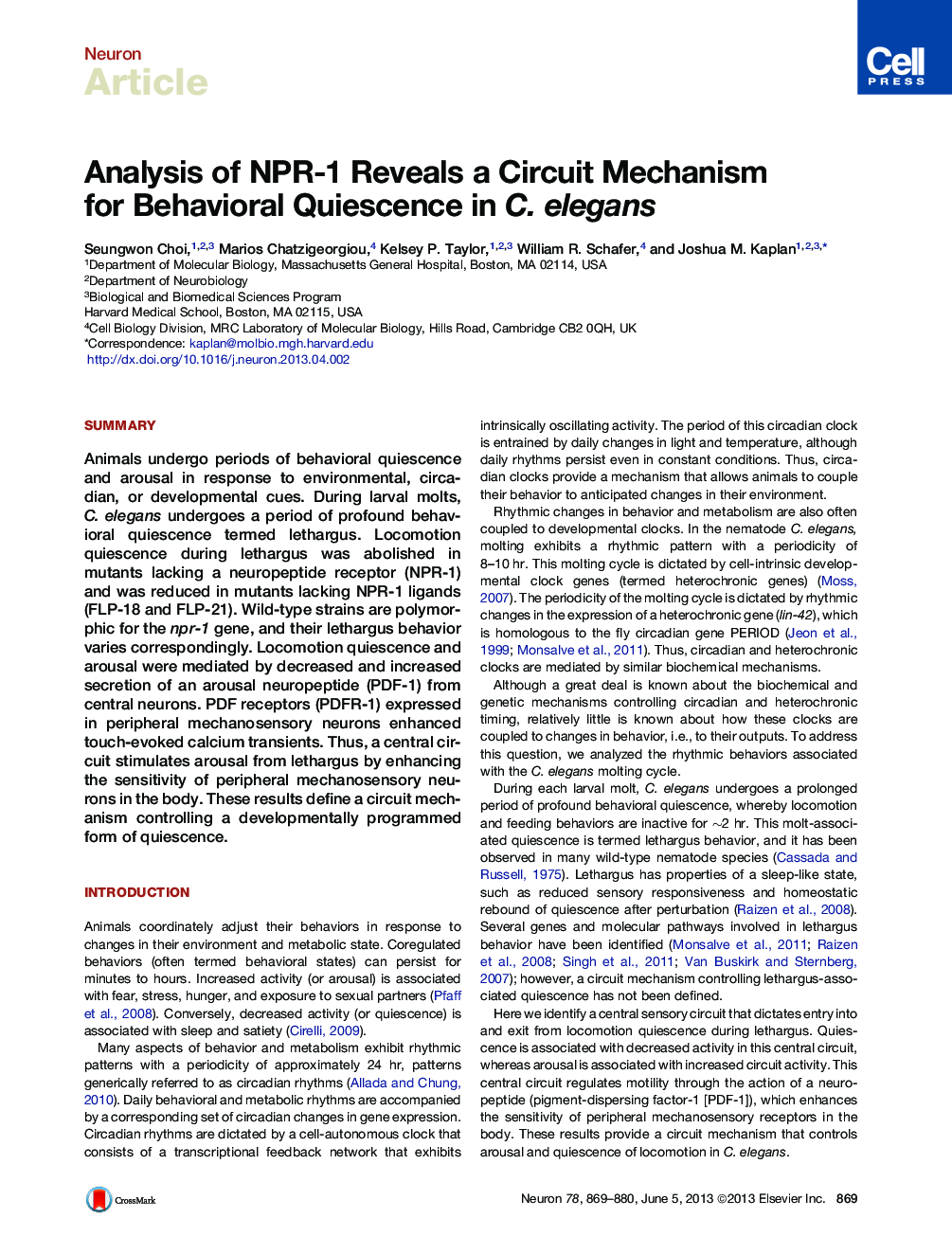| کد مقاله | کد نشریه | سال انتشار | مقاله انگلیسی | نسخه تمام متن |
|---|---|---|---|---|
| 4321346 | 1291601 | 2013 | 12 صفحه PDF | دانلود رایگان |

• NPR-1 and its ligands are required for locomotion quiescence during lethargus
• Increased activity in the RMG circuit promotes locomotion arousal
• Arousal is mediated by increased secretion of PDF-1 from the RMG circuit
• PDF-1 enhances the sensitivity of mechanosory neurons, increasing motility
SummaryAnimals undergo periods of behavioral quiescence and arousal in response to environmental, circadian, or developmental cues. During larval molts, C. elegans undergoes a period of profound behavioral quiescence termed lethargus. Locomotion quiescence during lethargus was abolished in mutants lacking a neuropeptide receptor (NPR-1) and was reduced in mutants lacking NPR-1 ligands (FLP-18 and FLP-21). Wild-type strains are polymorphic for the npr-1 gene, and their lethargus behavior varies correspondingly. Locomotion quiescence and arousal were mediated by decreased and increased secretion of an arousal neuropeptide (PDF-1) from central neurons. PDF receptors (PDFR-1) expressed in peripheral mechanosensory neurons enhanced touch-evoked calcium transients. Thus, a central circuit stimulates arousal from lethargus by enhancing the sensitivity of peripheral mechanosensory neurons in the body. These results define a circuit mechanism controlling a developmentally programmed form of quiescence.
Journal: - Volume 78, Issue 5, 5 June 2013, Pages 869–880